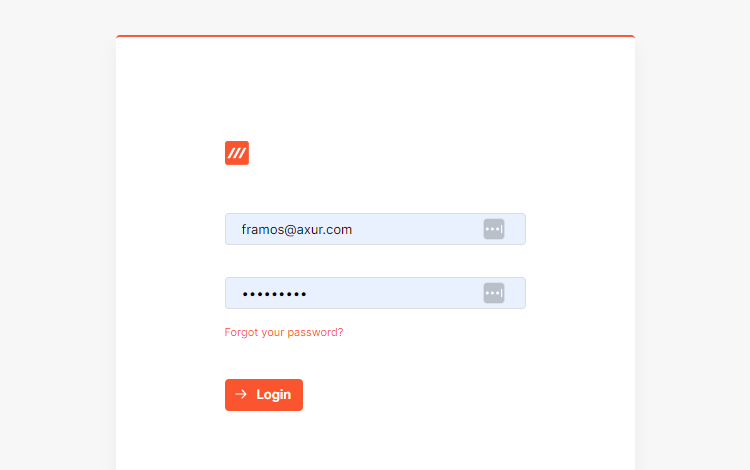
Attackers Are Targeting IT Service Providers 2
Attackers Are Targeting IT Service Providers 2: The cybersecurity landscape is shifting, and IT service providers are increasingly becoming prime targets for sophisticated cyberattacks. This isn’t just about stealing data; it’s about disrupting entire businesses, crippling essential services, and causing widespread financial chaos. We’ll delve into the alarming rise of these attacks, exploring the motivations behind them, the vulnerabilities exploited, and the devastating consequences for both the providers and their clients.
From ransomware attacks crippling operations to sophisticated phishing campaigns targeting employees, the methods used are constantly evolving. We’ll examine real-world examples, analyze common attack vectors, and explore the critical role of security best practices, regulations, and the impact of emerging technologies like AI and IoT on this escalating threat. This isn’t just a technical problem; it’s a human one, requiring a multi-faceted approach to mitigation and prevention.
The Rise in Attacks Targeting IT Service Providers
The cybersecurity landscape is shifting, with a dramatic increase in sophisticated attacks targeting IT service providers (ITSPs). This isn’t just a nuisance; it represents a significant threat to businesses of all sizes, as ITSPs often hold the keys to an organization’s digital infrastructure and sensitive data. The consequences of a successful attack against an ITSP can ripple outwards, impacting numerous clients and causing widespread disruption.The motivations behind these attacks are multifaceted, driven by a potent combination of financial gain, espionage, and the desire to cause widespread disruption.
Motivations Behind Attacks on ITSPs
Financial gain is a primary driver. By compromising an ITSP, attackers gain access to a large pool of potential victims. They can leverage this access to deploy ransomware, steal sensitive data for sale on the dark web, or conduct fraudulent activities using compromised accounts. The sheer scale of potential victims makes targeting ITSPs a highly lucrative proposition for cybercriminals.
Espionage is another significant factor. ITSPs often manage critical infrastructure and sensitive data for numerous clients, making them attractive targets for state-sponsored actors and competitors seeking valuable intellectual property or trade secrets. A successful attack can provide a treasure trove of information, giving attackers a significant strategic advantage. Finally, disruption is a powerful motivator, particularly for hacktivist groups or nation-state actors.
Disrupting an ITSP’s operations can cascade down to numerous clients, causing significant economic damage and potentially impacting essential services. This type of attack aims to create chaos and instability, sending a broader political or social message.
Attack Vectors Against ITSPs
Attackers employ a variety of sophisticated techniques to breach the defenses of ITSPs. These attacks often exploit vulnerabilities in software, misconfigurations, or human error.
| Attack Vector | Target | Impact | Mitigation Strategy |
|---|---|---|---|
| Phishing and Social Engineering | ITSP employees | Data breaches, malware infections, lateral movement within the ITSP’s network | Security awareness training, multi-factor authentication (MFA), robust email filtering |
| Exploiting Software Vulnerabilities | Unpatched or outdated software, including customer-facing applications and internal systems | Remote code execution, data exfiltration, denial-of-service (DoS) attacks | Regular software patching and updates, vulnerability scanning, penetration testing |
| Supply Chain Attacks | Third-party vendors or software used by the ITSP | Compromised software or services leading to widespread infections across the ITSP’s client base | Careful vendor vetting, robust security assessments of third-party software, supply chain risk management |
| Brute-Force and Credential Stuffing Attacks | Weak or reused passwords, default credentials | Account takeover, unauthorized access to systems and data | Strong password policies, MFA, regular password changes, account lockout policies |
Vulnerabilities Exploited in Attacks
The rise in attacks targeting IT service providers isn’t surprising given the wealth of sensitive data they manage. These attacks exploit a range of vulnerabilities, often leveraging a combination of technical weaknesses and human error. Understanding these vulnerabilities is crucial for improving security posture and mitigating risk. This section will delve into the common attack vectors used against IT service providers.
Attackers are opportunistic, seeking the path of least resistance. This means they exploit the easiest vulnerabilities first, often focusing on misconfigurations, outdated software, and weak passwords. Social engineering, however, remains a powerful tool, bypassing even the strongest technical defenses.
Misconfigurations, Outdated Software, and Weak Passwords
Misconfigurations in network devices, servers, and applications are a frequent entry point for attackers. For example, an improperly configured firewall might allow unauthorized access to internal systems, while a vulnerable web server could be easily exploited. Outdated software is another major concern, as unpatched vulnerabilities are readily available for attackers to exploit. Many attacks leverage known vulnerabilities in widely used software, such as outdated versions of operating systems, databases, or web applications.
Finally, weak passwords, often easily guessable or obtained through phishing, provide a straightforward way for attackers to gain access to accounts and systems. The combination of these three vulnerabilities often creates a potent and easy-to-exploit attack surface.
Social Engineering Tactics
Social engineering remains a highly effective attack vector. Attackers often employ phishing emails, pretexting, and other deceptive tactics to trick employees into revealing sensitive information or granting access to systems. A successful phishing campaign might trick an employee into clicking a malicious link or downloading a harmful attachment, leading to malware infection or credential theft. Pretexting involves creating a believable scenario to manipulate an employee into divulging confidential information.
For example, an attacker might impersonate a senior manager or IT support staff to gain access to systems or data. The effectiveness of social engineering highlights the importance of security awareness training for all employees.
With attackers increasingly targeting IT service providers, robust security is paramount. Building secure and scalable applications is key, and that’s where understanding the power of modern development comes in. Check out this article on domino app dev the low code and pro code future to see how streamlined development can help improve security postures. Ultimately, strengthening the entire IT ecosystem against these attacks starts with secure application development practices.
Examples of Successful Exploits
The NotPetya ransomware attack in 2017, while not solely targeting IT service providers, significantly impacted many through their clients. It spread rapidly through a compromised accounting software update, demonstrating the danger of supply chain attacks. The attackers exploited a vulnerability in the software to deploy ransomware, encrypting data and demanding payment for its release. The attack’s success highlighted the vulnerability of relying on third-party software and the importance of robust patching and update procedures.
Another example is the SolarWinds supply chain attack, where malicious code was inserted into updates for SolarWinds’ Orion platform, infecting thousands of organizations worldwide. This attack leveraged the trust placed in a well-known software provider to gain access to a wide range of targets. The attackers’ ability to remain undetected for months showcases the difficulty of identifying and mitigating sophisticated supply chain attacks.
Impact on Clients of Targeted IT Service Providers

When attackers target IT service providers (ITSPs), the consequences ripple far beyond the provider itself. The interconnected nature of modern business means that a compromised ITSP can expose a vast network of clients to significant risks, leading to a cascading effect of disruption and damage. Understanding this impact is crucial for both clients and ITSPs to implement robust security measures.The attack on an ITSP can create a domino effect, impacting clients in several ways.
The most immediate concern is often service disruption. If the ITSP’s systems are compromised, clients may lose access to essential services like email, cloud storage, or critical applications. This downtime can severely impact productivity, lead to missed deadlines, and ultimately affect revenue. Beyond service disruption, data breaches are a major concern. Clients often store sensitive data – customer information, financial records, intellectual property – with their ITSP.
A successful attack could expose this data, leading to significant financial and reputational damage for the client. Furthermore, the financial losses for clients can extend beyond immediate costs like remediation and recovery. Legal fees, regulatory fines, and the loss of customer trust can all contribute to substantial long-term financial repercussions.
Data Breaches and Their Consequences for Clients
A data breach resulting from an attack on an ITSP can have devastating consequences for its clients. The stolen data can range from customer Personally Identifiable Information (PII) like names, addresses, and social security numbers to sensitive financial data, intellectual property, and trade secrets. The exposure of such information can lead to identity theft, financial fraud, reputational damage, and legal liabilities for the client organization.
The cost of dealing with a data breach, including notification costs, credit monitoring services for affected individuals, and legal and regulatory fines, can run into millions of dollars.
Examples of Real-World Scenarios, Attackers are targeting it service providers 2
Several real-world examples highlight the severe impact of attacks on ITSPs on their clients. The NotPetya ransomware attack in 2017, though not directly targeting ITSPs, crippled many businesses through their reliance on infected ITSP services. Companies like Maersk and Merck experienced significant disruptions and financial losses due to this widespread attack. While not always publicly disclosed, many smaller incidents occur regularly, demonstrating the ongoing risk.
In these scenarios, clients faced everything from system downtime and data loss to significant financial repercussions and reputational damage. The cascading effect, resulting from the reliance on a compromised ITSP, often amplified the initial impact of the attack.
Types of Compromised Client Data and Associated Risks
| Type of Client Data | Associated Risks |
|---|---|
| Personally Identifiable Information (PII) | Identity theft, fraud, reputational damage, legal liabilities |
| Financial Data (credit card numbers, bank account details) | Financial fraud, identity theft, regulatory fines |
| Intellectual Property (trade secrets, patents, designs) | Loss of competitive advantage, financial losses, legal disputes |
| Customer Data (purchase history, preferences, communication records) | Reputational damage, loss of customer trust, legal liabilities |
| Healthcare Data (Protected Health Information – PHI) | HIPAA violations, significant fines, reputational damage |
Security Measures and Best Practices
The escalating attacks on IT service providers demand a proactive and multi-layered security approach. Ignoring best practices leaves both the service provider and their clients vulnerable to significant financial and reputational damage. A robust security posture isn’t just a checklist; it’s a continuous process of adaptation and improvement.Implementing effective security measures requires a holistic strategy encompassing technology, processes, and people.
This involves not only deploying the right tools but also fostering a security-conscious culture within the organization and establishing clear protocols for handling incidents.
Robust Security Monitoring and Incident Response
Effective security monitoring involves the continuous observation and analysis of network traffic, system logs, and security alerts. This allows for the early detection of suspicious activities and potential breaches. A well-defined incident response plan is crucial; it Artikels the steps to be taken in case of a security incident, ensuring a coordinated and effective response to minimize damage and recovery time.
This plan should include communication protocols, escalation procedures, and post-incident analysis to identify weaknesses and prevent future incidents. Regular testing and simulations of the incident response plan are vital to ensure its effectiveness. For example, a simulated ransomware attack can reveal gaps in the plan and highlight areas needing improvement.
Multi-Factor Authentication, Access Control Lists, and Intrusion Detection Systems
Multi-factor authentication (MFA) adds an extra layer of security by requiring multiple forms of verification before granting access to systems and data. This significantly reduces the risk of unauthorized access, even if credentials are compromised. Access control lists (ACLs) define which users or groups have permission to access specific resources. By implementing the principle of least privilege – granting only the necessary access rights – the impact of a potential breach is significantly reduced.
Intrusion detection systems (IDS) monitor network traffic for malicious activities and generate alerts when suspicious patterns are detected. A well-configured IDS can identify and block various types of attacks, including denial-of-service attacks and malware infections. For instance, an IDS might detect a large number of failed login attempts from a single IP address, indicating a potential brute-force attack.
Comparison of Security Solutions
Various security solutions cater to different needs and budgets. Cloud-based security information and event management (SIEM) systems offer centralized logging and analysis, providing a comprehensive view of security events across the entire infrastructure. On-premise solutions offer more control but require significant investment in hardware and maintenance. Endpoint detection and response (EDR) solutions monitor individual devices for malicious activity, providing detailed insights into threats.
Next-generation firewalls (NGFWs) offer advanced threat protection beyond traditional firewall capabilities, utilizing features such as deep packet inspection and application control. The choice of solution depends on factors such as budget, technical expertise, and the specific security requirements of the IT service provider. A smaller provider might opt for a cloud-based SIEM solution, while a larger organization might prefer a more comprehensive on-premise solution incorporating multiple layers of security.
The Role of Regulation and Compliance
The increasing frequency of attacks targeting IT service providers underscores the critical need for robust regulatory frameworks and compliance standards. These regulations not only protect the service providers themselves but also safeguard the data and systems of their clients, contributing to a more secure digital landscape. Failure to comply can lead to significant financial penalties, reputational damage, and even legal action.Regulations and compliance standards provide a baseline for security practices, offering a structured approach to risk management.
They encourage proactive security measures and help IT service providers demonstrate their commitment to data protection and client security. This, in turn, builds trust and fosters stronger client relationships.
Key Regulations and Standards for IT Service Providers
The importance of adhering to relevant regulations and standards cannot be overstated. Non-compliance exposes IT service providers to significant risks, including hefty fines, legal battles, and loss of client trust. Understanding and implementing these standards is a crucial aspect of responsible IT service provision.
- GDPR (General Data Protection Regulation): This EU regulation dictates how personal data should be collected, processed, and protected. IT service providers handling EU citizens’ data must comply, facing substantial fines for non-compliance.
- HIPAA (Health Insurance Portability and Accountability Act): This US law protects the privacy and security of patients’ health information. IT service providers working with healthcare organizations must adhere to strict HIPAA rules regarding data security and access control.
- NIST Cybersecurity Framework: While not a law, this framework provides a voluntary set of guidelines for improving cybersecurity practices. Many organizations use it as a benchmark for their security posture, demonstrating a commitment to robust security to clients.
- ISO 27001: This internationally recognized standard specifies requirements for establishing, implementing, maintaining, and continually improving an information security management system (ISMS).
- PCI DSS (Payment Card Industry Data Security Standard): This standard applies to organizations that process, store, or transmit credit card information. Compliance is mandatory for these businesses to avoid penalties and maintain their ability to process payments.
Implications of Non-Compliance
Non-compliance with relevant regulations can have severe consequences for IT service providers. These repercussions extend beyond financial penalties to encompass significant reputational damage and potential legal liabilities. The loss of client trust is a particularly damaging outcome, impacting business sustainability.
- Financial Penalties: Many regulations carry substantial fines for non-compliance, potentially crippling smaller providers.
- Legal Action: Data breaches and non-compliance can lead to lawsuits from clients or regulatory bodies.
- Reputational Damage: Public disclosure of non-compliance can severely damage an IT service provider’s reputation, leading to loss of clients and business opportunities.
- Loss of Client Trust: Clients are increasingly demanding demonstrable commitment to security. Non-compliance erodes trust, making it difficult to attract and retain clients.
Regulations and Security Measures: A Visual Representation
Imagine a Venn diagram. One circle represents industry regulations (GDPR, HIPAA, ISO 27001, etc.). The other circle represents specific security measures implemented by an IT service provider (encryption, multi-factor authentication, intrusion detection systems, etc.). The overlapping area represents the crucial intersection: security measures implemented to meet regulatory requirements. The larger the overlap, the stronger the provider’s security posture and compliance status.
A smaller overlap indicates potential vulnerabilities and increased risk. The ideal scenario shows a large overlap, demonstrating a strong commitment to both security and regulatory compliance.
Future Trends and Predictions

The attack landscape against IT service providers is constantly evolving, driven by technological advancements and the increasing reliance on outsourced IT infrastructure. Predicting the future with certainty is impossible, but by analyzing current trends and emerging technologies, we can anticipate likely scenarios and develop proactive strategies. This section will explore these future trends, focusing on the impact of emerging technologies and recommending proactive measures.
The sophistication and frequency of attacks will undoubtedly increase. Attackers are becoming more organized, employing advanced techniques, and targeting vulnerabilities with greater precision. This trend is fueled by the increasing profitability of data breaches and the expanding attack surface presented by the interconnected nature of modern IT systems.
The Impact of Artificial Intelligence and Machine Learning
AI and machine learning are transforming the cybersecurity landscape, impacting both attackers and defenders. Attackers are leveraging AI to automate various stages of the attack lifecycle, from reconnaissance and vulnerability scanning to exploiting weaknesses and evading detection. This includes the use of AI-powered phishing campaigns that personalize attacks and bypass traditional security filters, as well as the automation of brute-force attacks to compromise accounts at an unprecedented scale.
On the defensive side, AI can be used to detect anomalies, predict attacks, and automate incident response. However, the effectiveness of AI-driven security measures depends on the quality of the data used to train the algorithms and the ability to stay ahead of evolving attack techniques. A crucial aspect is the potential for attackers to utilize AI to create more sophisticated and harder-to-detect malware, making it essential for security professionals to constantly adapt and update their defensive strategies.
The Expanding Threat of the Internet of Things (IoT)
The proliferation of IoT devices creates a vast and expanding attack surface for IT service providers. Many IoT devices lack robust security features, making them easy targets for attackers seeking to gain access to networks and data. A successful attack on a single IoT device could provide a foothold for a larger attack against a client’s entire infrastructure, potentially leading to significant data breaches and operational disruptions.
For example, a compromised smart thermostat could be used as a launchpad for a larger network attack, leveraging its connection to the client’s network to access more sensitive information. This highlights the need for robust security measures for IoT devices and careful integration into corporate networks.
Proactive Measures to Address Future Challenges
Several proactive measures can help IT service providers mitigate future threats. These include:
Investing in advanced threat detection and response technologies, including AI-powered solutions, is paramount. This includes regular security audits and penetration testing to identify and address vulnerabilities before they can be exploited. Furthermore, implementing robust security awareness training programs for employees is crucial to prevent human error from becoming a weak link in the security chain. Finally, developing strong incident response plans and regularly testing them ensures that organizations are prepared to effectively manage and contain security incidents when they occur.
A multi-layered security approach is key, combining technological solutions with human vigilance and proactive risk management.
A Potential Future Attack Scenario
Imagine a scenario where an attacker uses AI-powered tools to identify a vulnerability in a widely used IT service provider’s remote access software. This vulnerability allows the attacker to gain unauthorized access to multiple client networks through a single compromised point. The attacker then uses AI-driven malware to laterally move across the compromised networks, stealing sensitive data and deploying ransomware.
The impact could be catastrophic, resulting in widespread data breaches, financial losses, reputational damage, and potential regulatory fines for the IT service provider and its clients. This scenario highlights the interconnectedness of modern IT infrastructure and the cascading effects of a successful attack. The ability to swiftly detect and contain such attacks is critical to minimizing damage.
Last Word

The targeting of IT service providers represents a significant and evolving threat to the digital world. The cascading impact on clients, the potential for widespread data breaches, and the financial ramifications are simply too significant to ignore. By understanding the motivations behind these attacks, identifying vulnerabilities, and implementing robust security measures, we can collectively work towards a more resilient and secure digital ecosystem.
Staying informed, adapting to new threats, and prioritizing proactive security strategies are no longer optional – they are essential for survival in this increasingly hostile environment.
Helpful Answers: Attackers Are Targeting It Service Providers 2
What types of data are most commonly targeted in attacks on IT service providers?
Attackers often target sensitive client data, including financial records, personal information, intellectual property, and proprietary business data. The goal is to extract maximum value, whether for financial gain or for espionage.
How can small IT service providers afford robust security measures?
Small providers can leverage cost-effective solutions like cloud-based security services, open-source security tools, and prioritize employee training on security awareness. Focusing on fundamental security hygiene is often more impactful than expensive, complex solutions.
What is the role of insurance in mitigating the risks of cyberattacks for IT service providers?
Cyber insurance can help cover the costs associated with data breaches, legal fees, and business interruption following a successful attack. It’s a crucial part of a comprehensive risk management strategy.





